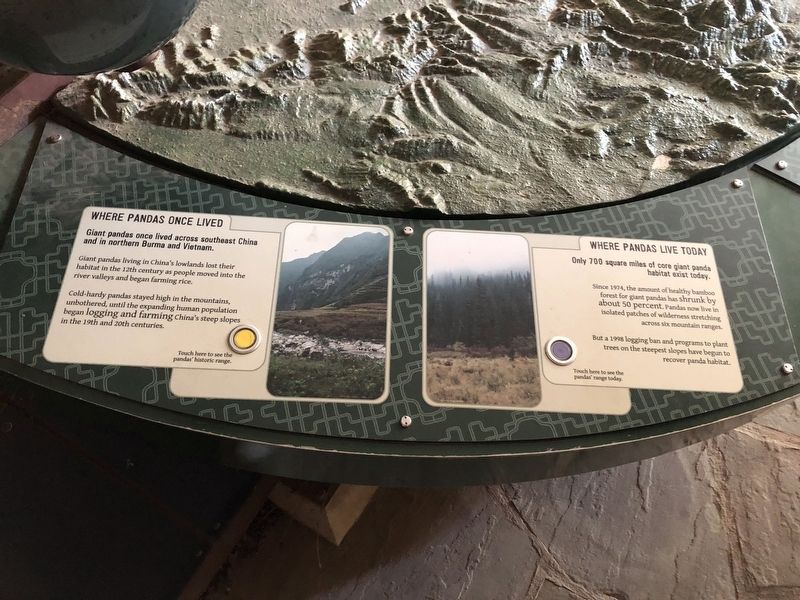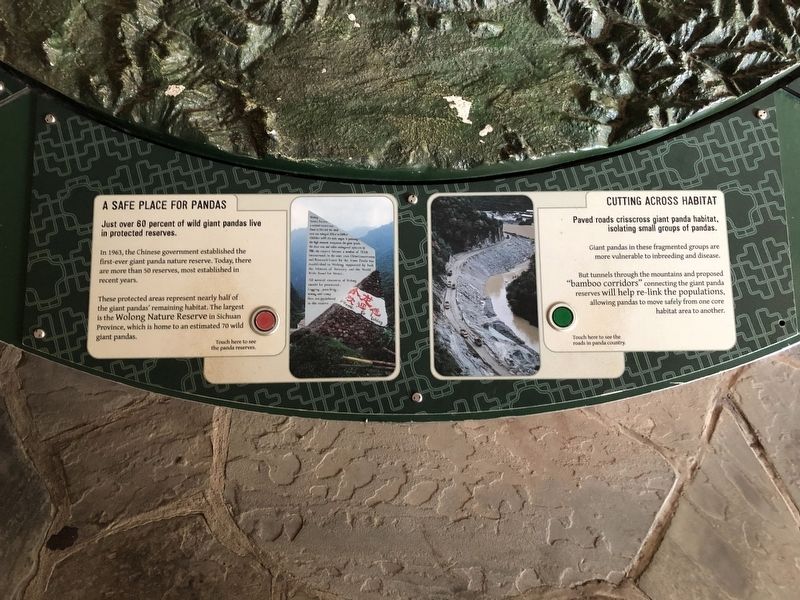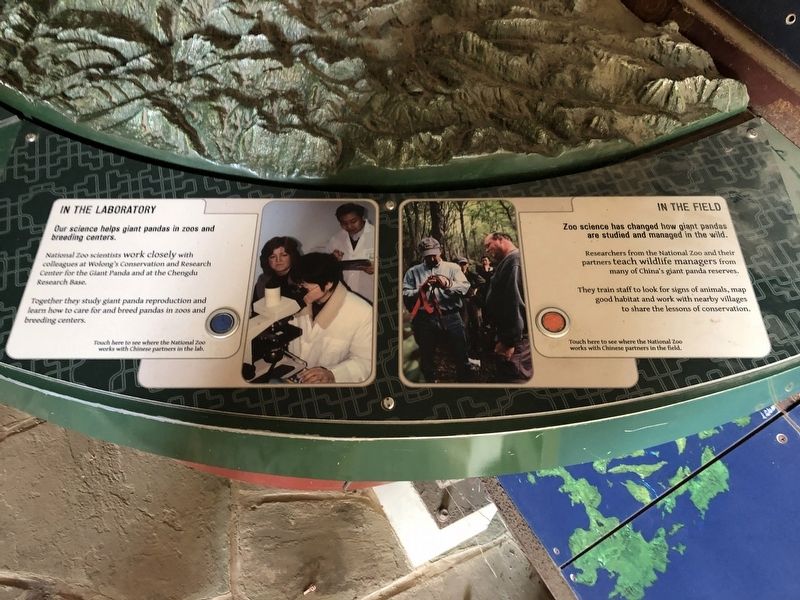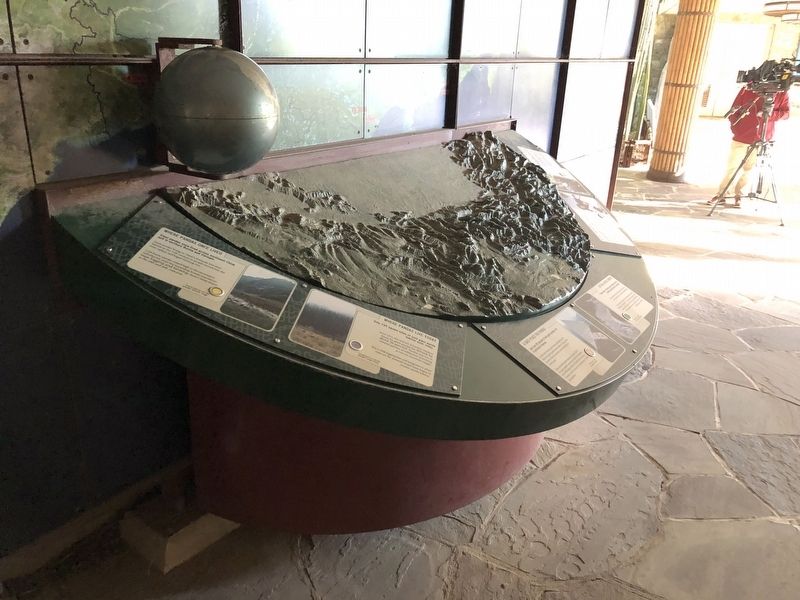Smithsonian National Zoo in Northwest Washington in Washington, District of Columbia — The American Northeast (Mid-Atlantic)
Giant Pandas
Where Pandas Once Lived
Giant pandas once lived across southeast China and in northern Burma and Vietnam.
Giant pandas living in China's lowlands lost their habitat in the 12th century as people moved into the river valleys and began farming rice.
Cold-hardy pandas stayed high in the mountains, unbothered, until the expansion of human population began logging and farming China's steep slopes in the 19th and 20th centuries.
Where Pandas Live Today
Only 700 square miles of core giant panda habitat exist today.
Since 1974, the amount of healthy bamboo forest for giant pandas has shrunk by about 50 percent. Pandas now live in isolated patches of wilderness stretching across six mountain ranges.
But a 1998 logging ban and programs to plant trees on the steepest slopes have begun to recover panda habitat.
A Safe Place For Pandas
Just over 60 percent of wild giant pandas live in protected reserves.
In 1963, the Chinese government established the first-ever giant panda nature reserve. Today, there are more than 50 reserves, most established in recent years.
These protected areas represent nearly half of the giant pandas' remaining habitat. The largest is the Wolong Nature Reserve in Sichuan Province, which is home to an estimated 70 wild giant pandas.
Cutting Across Habitat
Paved roads crisscross giant panda habitat, isolating small groups of pandas.
Giant pandas in these fragmented groups are more vulnerable to inbreeding and disease.
But tunnels through the mountains and proposed "bamboo corridors" connecting the giant panda reserves will help re-link the populations, allowing pandas to move safely from one core habitat to another.
In the Laboratory
Our science helps giant pandas in zoos and breeding centers.
National Zoo scientists work closely with colleagues at Wolong's Conservation and Research Center for the Giant Panda and at the Chengdu Research Base.
Together they study giant panda reproduction and learn how to care for and breed pandas in zoos and breeding centers.
In the Field
Zoo science has changed how giant pandas are studied and managed in the wild.
Researchers from the National Zoo and their partners teach wildlife managers from many of China's giant panda reserves.
They train staff to look for signs of animals, map good habitat and work with nearby villages to share the lessons of conservation.
Erected by
Topics. This historical marker is listed in these topic lists: Animals • Environment • Horticulture & Forestry • Science & Medicine. A significant historical year for this entry is 1974.
Location. 38° 55.844′ N, 77° 3.122′ W. Marker is in Northwest Washington in Washington, District of Columbia. It is in Smithsonian National Zoo. Marker can be reached from Olmsted Walk, 0.4 miles east of Connecticut Avenue Northwest, on the right when traveling east. Touch for map. Marker is at or near this postal address: 3001 Connecticut Ave NW, Washington DC 20008, United States of America. Touch for directions.
Other nearby markers. At least 8 other markers are within walking distance of this marker. Wang Dajun (here, next to this marker); An Alternative to Logging (here, next to this marker); Zhu Xiaojian (here, next to this marker); Back in Business (a few steps from this marker); 50 Years of Giant Panda Conservation Success (within shouting distance of this marker); Giant Panda (within shouting distance of this marker); a different marker also named Giant Panda (within shouting distance of this marker); An Invasive Fish (about 300 feet away, measured in a direct line). Touch for a list and map of all markers in Northwest Washington.
Credits. This page was last revised on January 30, 2023. It was originally submitted on October 22, 2021, by Devry Becker Jones of Washington, District of Columbia. This page has been viewed 70 times since then and 11 times this year. Photos: 1, 2, 3, 4. submitted on October 22, 2021, by Devry Becker Jones of Washington, District of Columbia.



